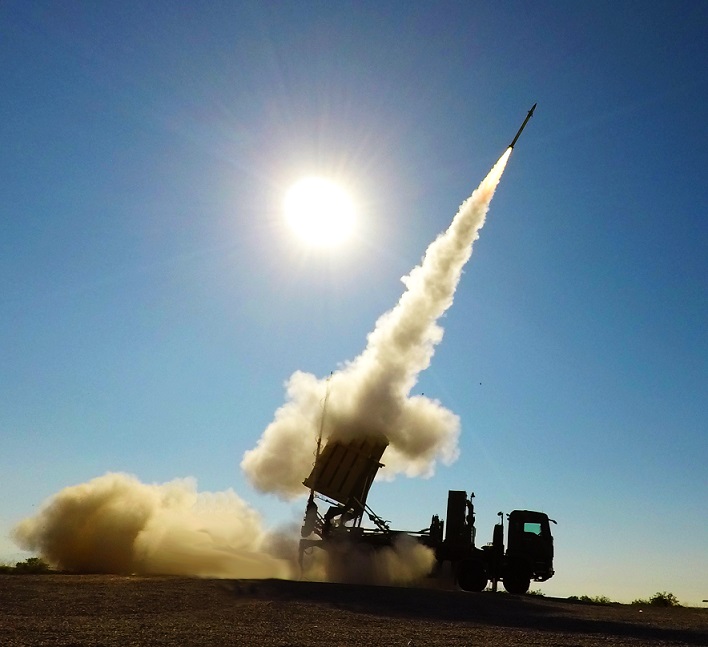This post is also available in:
 עברית (Hebrew)
עברית (Hebrew)
By Arie Egozi
RAFAEL Advanced Systems continues to add capabilities to its combat-proven air defense systems.
Only recently, the Israeli company has completed a two-week-long series of intercept tests with an advanced version of the RAFAEL David’s Sling missile interceptor.
The success of the tests, Israeli sources say, will expedite the expected U.S army decision to purchase the system.
The David Sling was launched against targets that depicted cruise and ballistic missiles. The tests conducted were led by RAFAEL from a testing site in central Israel, with the participation of the Israel Air Force and Navy.
According to the Israeli Ministry of Defense, this successful series is a critical milestone in the augmentation of Israel’s operational capabilities in defending itself against current and future threats.
David Sling and Iron Dome were launched from Israeli Navy SAAR 5 missile boats. The tests were conducted at sea because some of the simulated threats were “highly maneuverable” and that called for greater safety margins.
The series tested the capabilities of a new and advanced version of David’s Sling weapon system and included a number of scenarios simulating future threats. The results of this test will enable to evaluate and upgrade the system’s capabilities.
In the framework of the series, the Israel Missile Defense Organization (IMDO) and RAFAEL also successfully demonstrated the capabilities of the Iron Dome in intercepting a variety of threats, including UAVs and cruise missiles.
According to the Ministry, the test also demonstrated the interoperability of the multilayered air defense mechanism (Arrow, David’s Sling, and Iron Dome). This indicates that the systems will be capable of intercepting threats simultaneously during conflict.
David’s Sling is a significant component of Israel’s multi-layered air defense mechanism. The development of this mechanism is led by IMDO and consists of four layers: Iron Dome, David’s Sling, Arrow-2 and Arrow-3. These are all operational in the Israel Air Force.
According to RAFAEL, the capability that was demonstrated in this series of tests ensures the security of the State of Israel and its ability to contend with current and future threats. When the different systems in the multi-layered mechanism are combined, they may face a variety of simultaneous threats and defend the citizens of the State of Israel.
Israeli sources said that the results of the series of tests will undoubtedly expedite the U.S Army decision to add David’s Sling to its arsenal.
David’s Sling comprises the multi-pulse Stunner missile, which uses sophisticated sensors and control systems and an active electronically scanned array, or AESA, multi-mission radar for targeting and guidance. Repeated testing has proven the system’s ability to destroy large torrents of high-caliber rockets and short-range ballistic missiles.
David’s Sling’s maneuverable, two-stage, hit-to-kill Stunner missile has no warhead; the interceptor destroys threats with the sheer force of impact. The Stunner missile is proven to defeat all short-range ballistic missiles – 92 percent of the worldwide theater ballistic missile threat inventory. Stunner is in full-rate production and helps the system to bolster Israel’s defensive capabilities. It ensures safety for Israel’s infrastructure, way of life, and its people.
In 2016, Raytheon Missiles & Defense was authorized to offer the SkyCeptor interceptor as part of its Patriot Integrated Air and Missile Defense System bid for the Polish government’s missile defense procurement effort known as Wisla.
According to Raytheon, it is offering a SkyCeptor interceptor to fulfill Poland’s Narew short-range and Wisla medium-range air defense requirements. The company will offer SkyCeptor with a booster for the second phase of the Wisla program.
According to Raytheon, the SkyCeptor missile costs a fraction of other hit-to-kill interceptors.



























